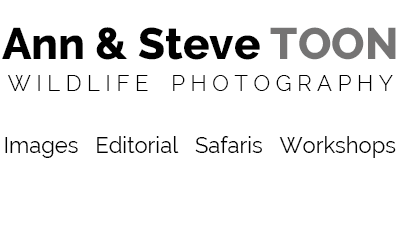Recent reports that a group called the Dallas Safari Club is to auction off the chance for a trophy hunter to shoot a black rhino in Namibia, with proceeds going to support conservation of the endangered species, has sparked furious condemnation from some quarters, and equally forthright support from others.

Despite the furore, the recyling of profits from big game hunting back into conservation is not a new practice in Africa. It’s viewed by its supporters, many of them leading conservationists, as a sustainable use, just like conventional safari tourism, of the local wildlife resource on a continent where conservation budgets are seriously squeezed. But how does a highly controversial approach to conserving endangered wildlife like this work in practice?
Namibia has had a policy of allowing limited trophy hunting for black rhino for some years and it’s certainly not been universally popular. On our recent visit to the country earlier this year we were able to ask Pierre du Preez, national rhino co-ordinator for the Namibian Ministry of Environment and Tourism (MET), just where the money from trophy hunting goes. What’s the justification for his country’s approach to the ‘consumptive utilisation’ of rhinos?
He explained that in 1997 the Namibian government established the Game Products Trust Fund, to channel revenue from wildlife utilisation into conservation. ‘Money from state ivory sales, rhino trophy hunting, tourism and hunting concessions, and 25 per cent of gate fees at national parks goes straight into the Fund,’ he told us. ‘It’s not something wishy washy, it’s a proven system. The GPTF was enacted by government at the time of ivory sales, to prove to the world that this money will definitely go back into conservation, not into the black hole of Government. It’s definitely worked.’
The Fund makes grants to a range of organisations, including conservancies, wildlife charities, and the MET, for use in wildlife conservation, with a particular emphasis on improving the relationship between people and wildlife.
Du Preez says the Fund is an important contributor to the Ministry’s rhino-protection work. ‘We get funding from individuals and organisations like Save the Rhino International and US Fish and Wildlife. But we do get a significant amount of money from government, for equipment, staff salaries, helicopter time. The Trust has a board, and we apply to it for funding. For example, we are developing an Unmanned Aerial Vehicle system for Etosha and other parks, with assistance from WWF/Google. The system we’ve now commissioned is bought through the GPTF.’

‘On trophies, we are only allowed to shoot five rhino, all identified animals, all bulls that are past their prime,’ he says. ‘It’s a significant income, income that flows back into rhino conservation, into organisations like Save The Rhino Trust. The GPTF is about 70-80 per cent money accrued out of utilisation, [so-called] ‘blood money’.’
Du Preez argues that sustainable utilisation of wildlife has been key to building Namibia’s reputation as a country of conservation. ‘Just look at the changed attitudes over the last ten years, the poverty alleviation because of wildlife, and the increase of wildlife in all areas,’ he says. ‘Look at what utilisation has done for making areas available for wildlife. If we look at the rhino custodian programme, that programme has more rhino now than certain range states in Africa. 90 per cent of those animals are on hunting farms, not reserves. All those people are into utilisation of the wildlife. In a big sense that’s where we can sit down with communities and talk to them.’
Namibia’s black rhino are state-owned, but about 50 per cent are outside of national parks, many of these on private land, cared for under the country’s custodianship programme. ‘MET do the biological management, captures, immobilisations, but the day to day safety of animals, fencing, water, whatever the animals need on the farm, that’s the full responsibility of the custodian. So a lot of the management is taken off us. They don’t have any consumptive use of the animals, only non-consumptive,’ explains du Preez.

It’s proven a successful model: ‘In 1966 we had about 60 or so animals left in the country. We had a dip in 1989 when we had serious poaching, but in the past 20 years, we’ve lost no more than ten or twelve animals to poaching. Now we’re standing at over 1,700 animals. The population growth over the time period, about 5 per cent per annum, is quite realistic for Namibia – we’re very arid.’
‘Overall the population is doing very well. Our management plan says we must try for 5 per cent, and we do achieve it. Over the past couple of years it’s been 7 per cent, but we’ve had very good rains. The north west population, the biggest outside of any protected area, is doing extremely well. We’ll start getting problems as soon as we enter a drought again, but that’s expected.’
For Pierre du Preez controlled trophy hunting of a small number of non-productive bulls is a worthwhile price to pay for conservation funding. With ever-increased spending on anti-poaching measures inevitable, it seems unlikely that the Namibian government will ban trophy hunting any time soon.


Buddy2Blogger
November 12, 2013 4:42 amReblogged this on Sherlockian's Blog.
Trevor
December 5, 2013 12:17 amYes if you are just talking with numbers and figures, we believe that it goes much deeper than that, all life has a right to exist. How about using a paintball gun with paint that will wash off if you need the thrill of the hunt then we would all have the privilege of seeing wildlife for it’s own sake.